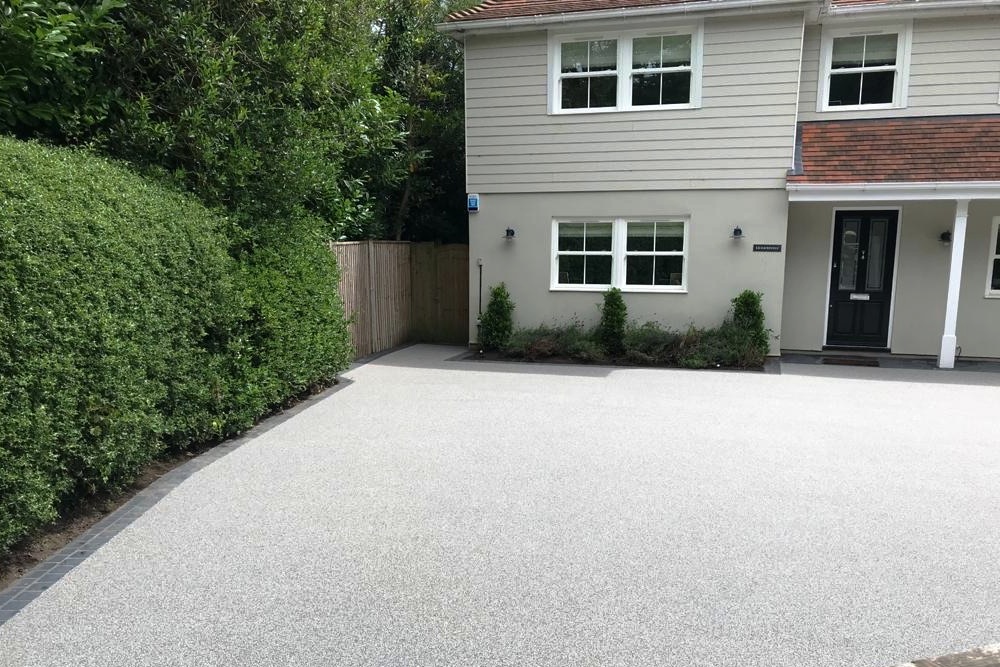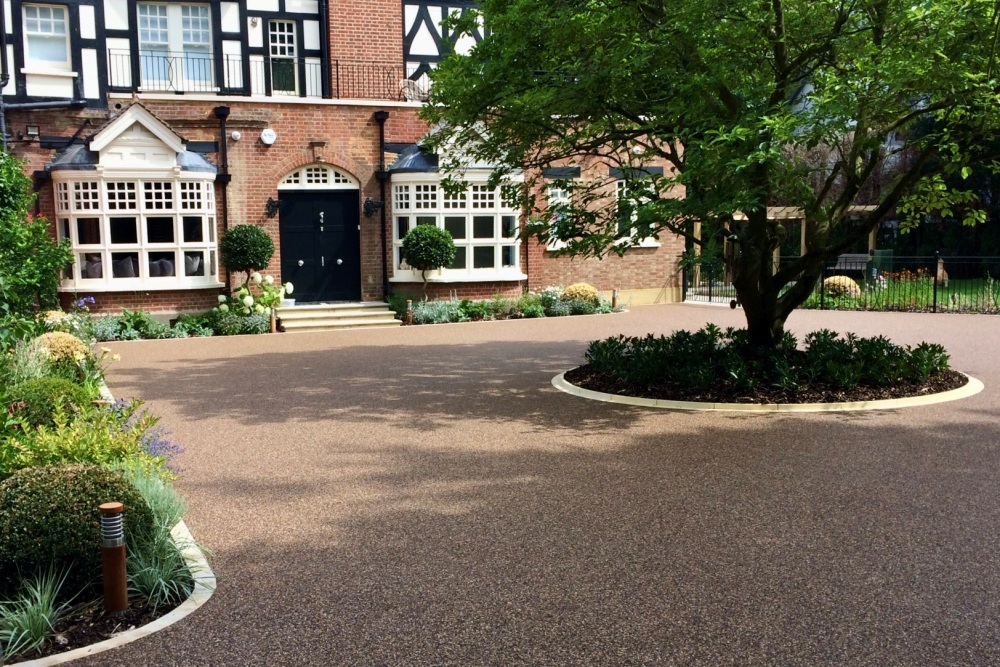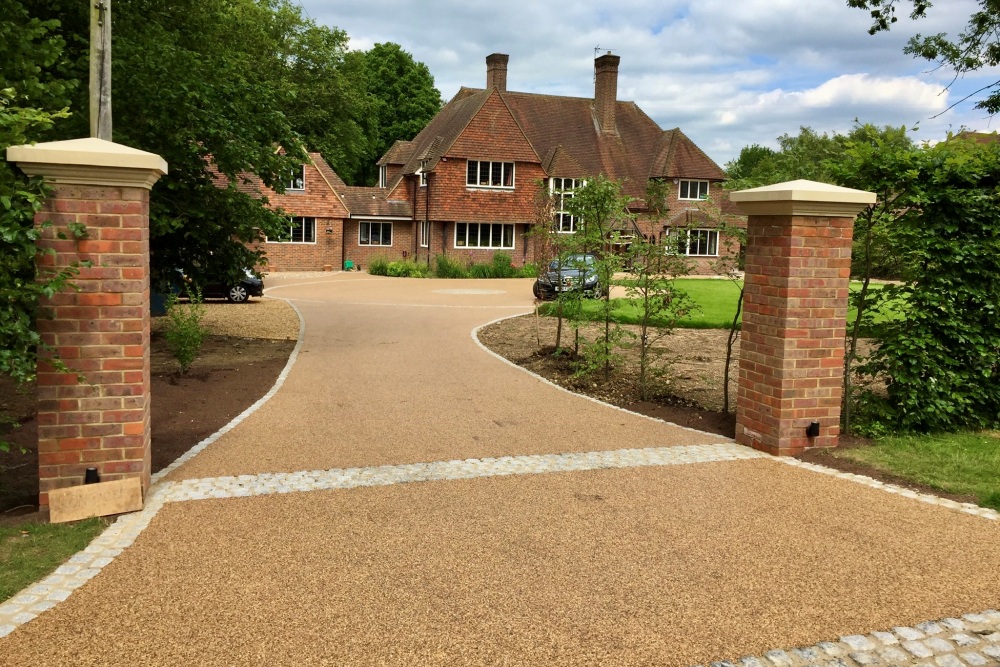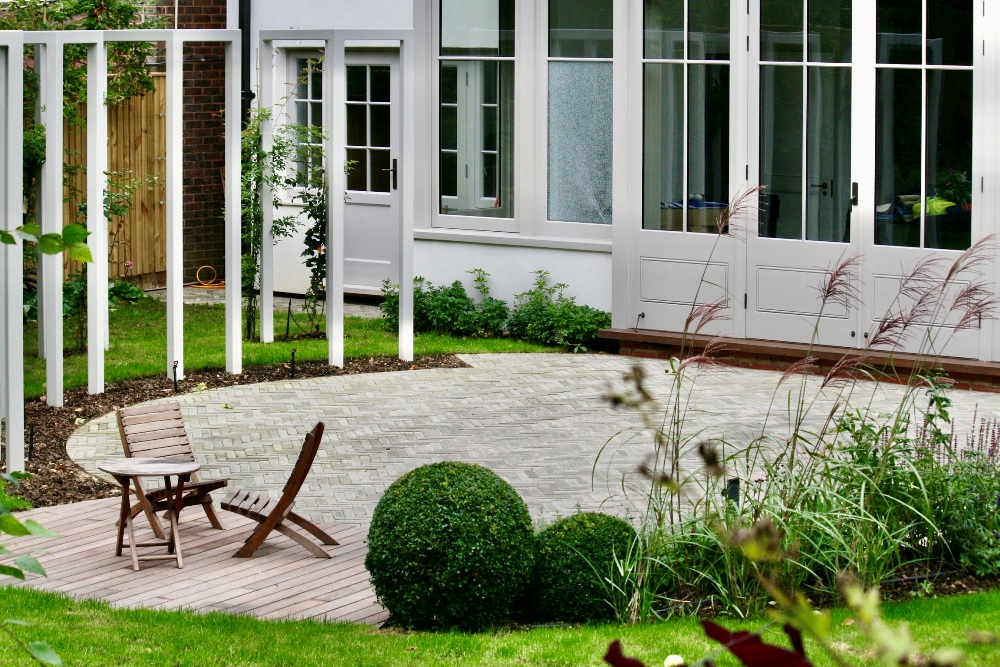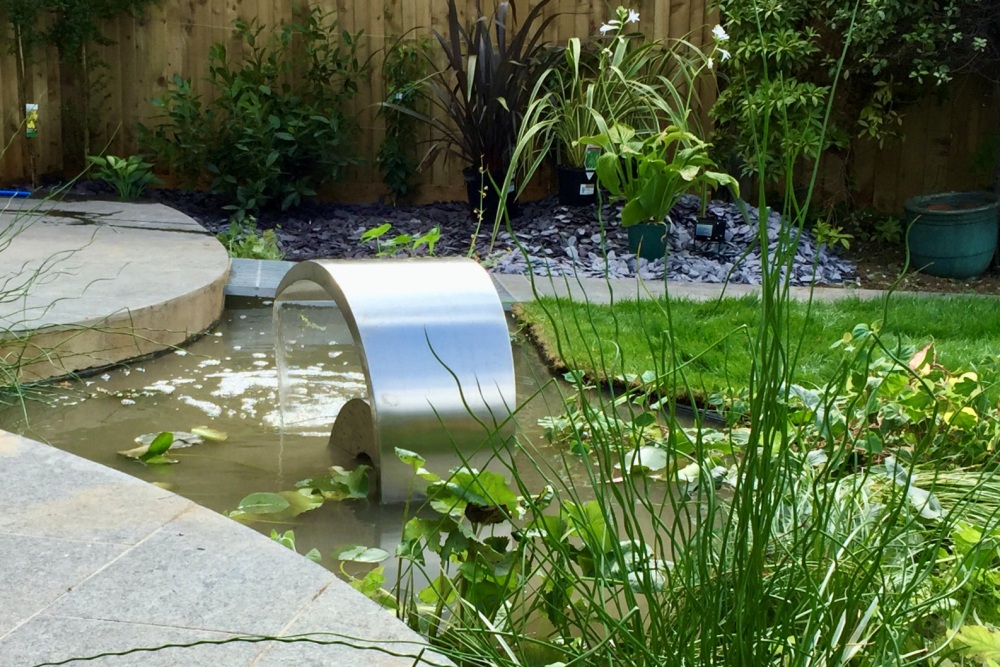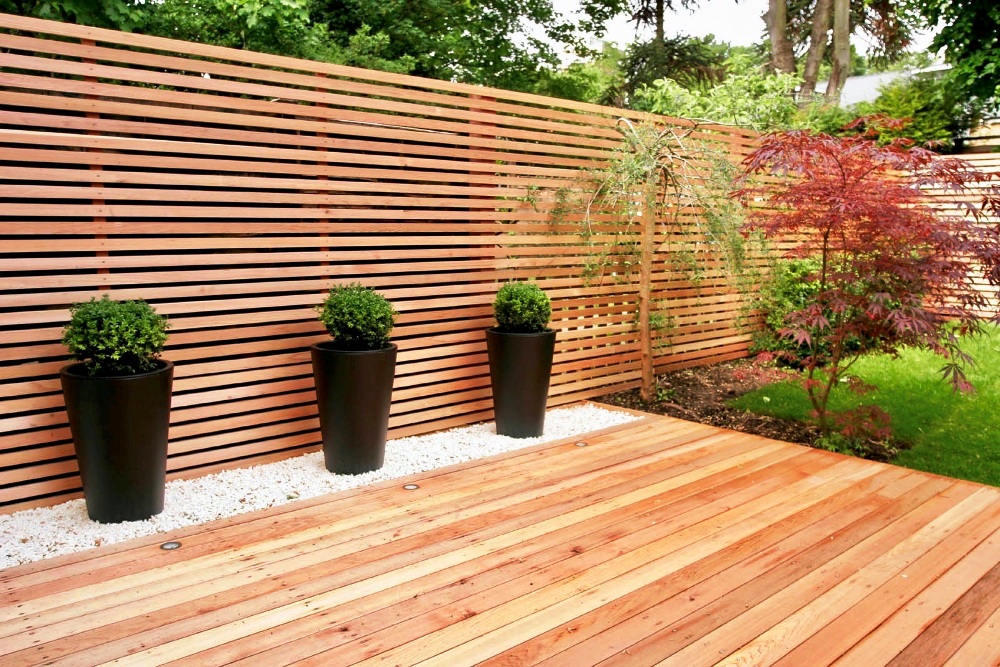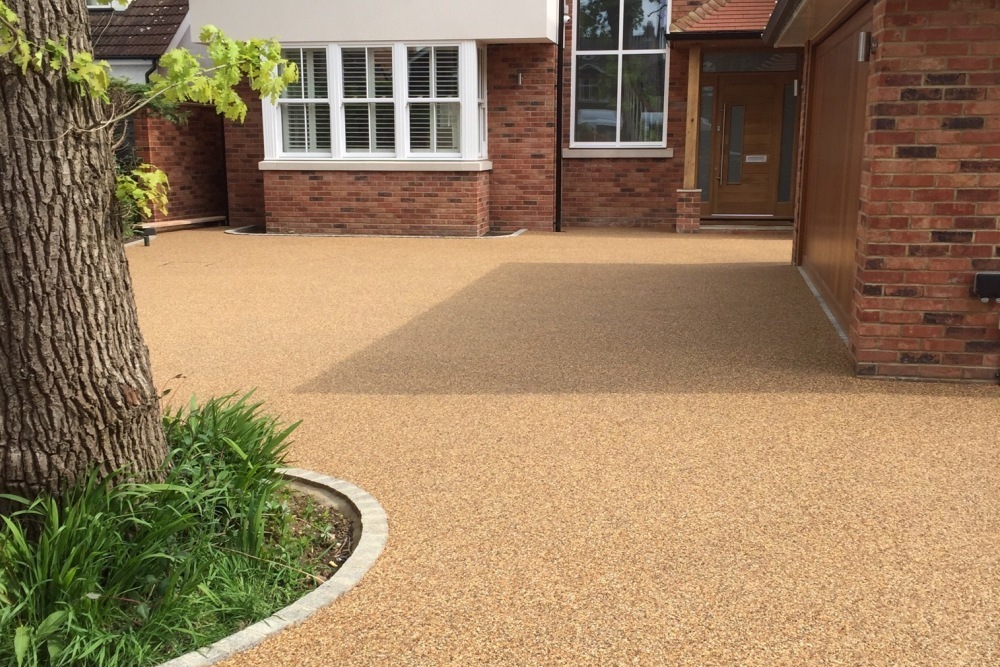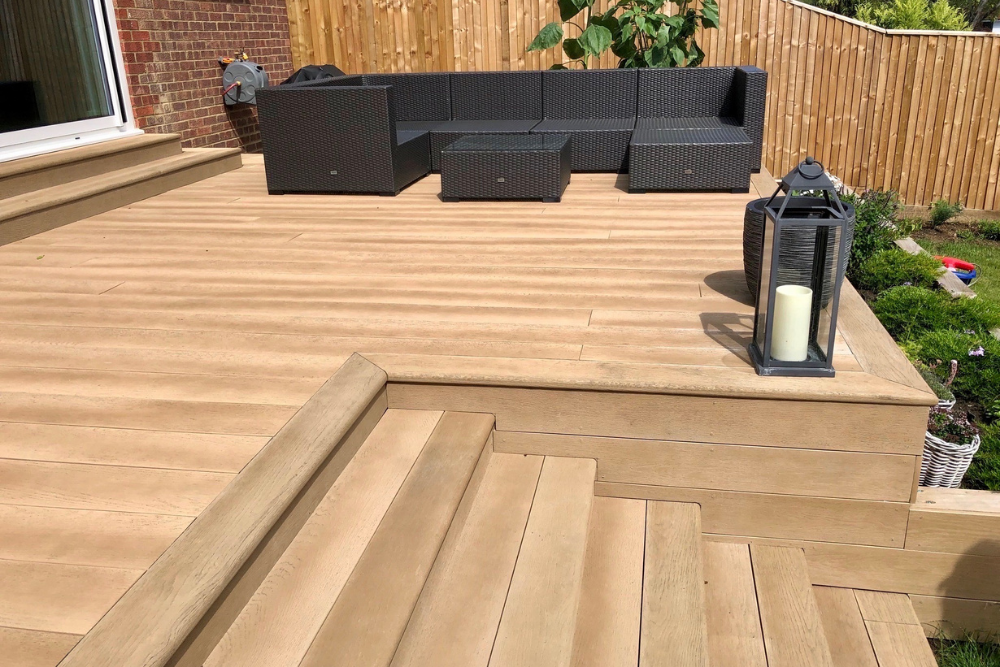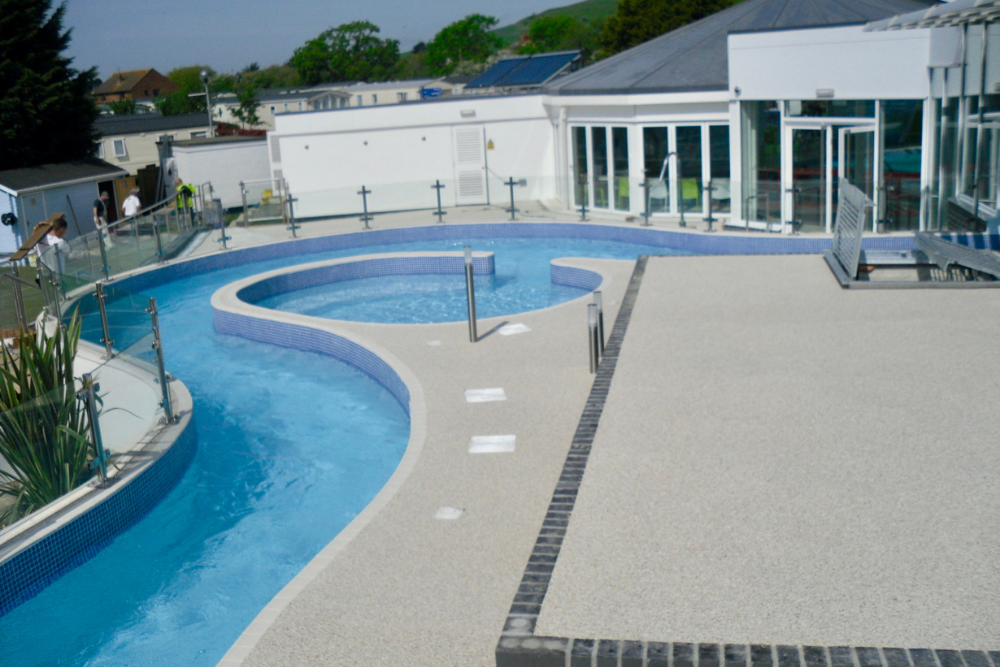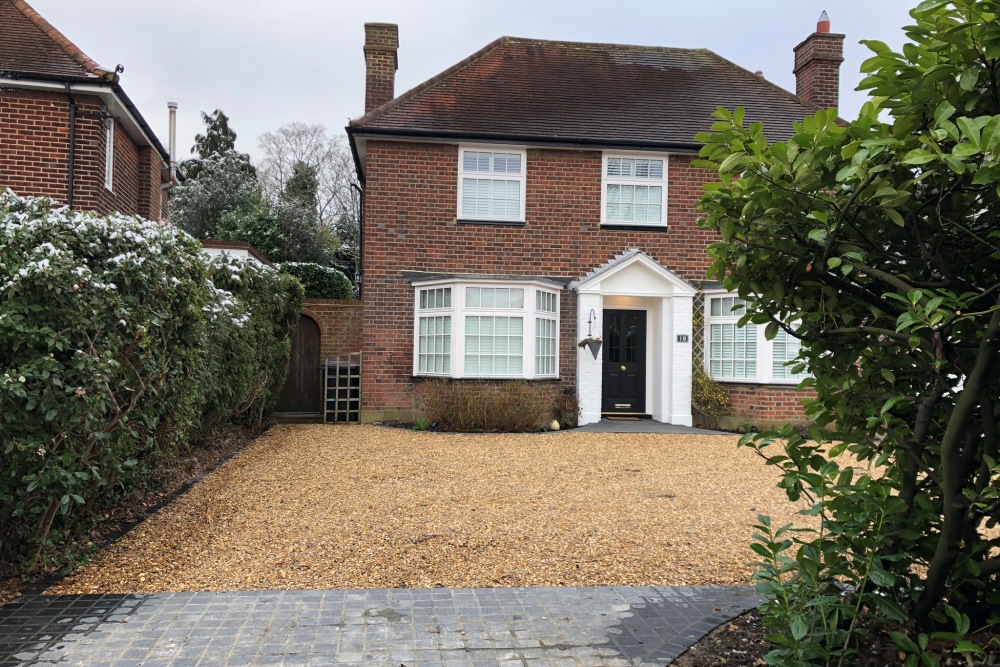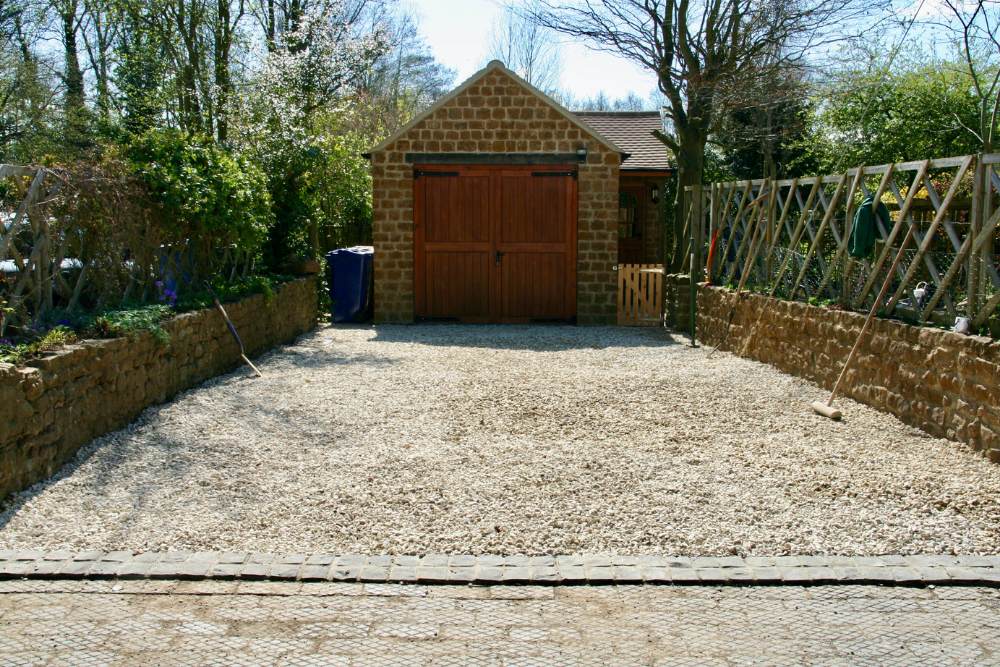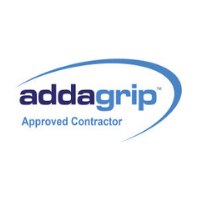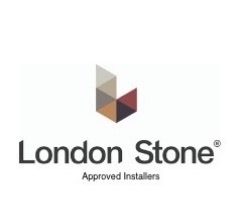For a free, no obligation quote call 0800 085 4299
Loose Gravel
Loose gravel provides a relatively simple, low-cost driveway option which still looks great. It can really suit the right property and give the ‘crunch’ of natural stone underfoot. If you have a modest budget or a large area to cover, then loose gravel is ideal. It is easy and quick to install and is permeable.
Loose gravel can range in size from tiny sand-like grains to large rocks. Typically surface dressings are in the 6-20mm size range. Anything smaller can be easily disturbed; anything larger can be difficult to walk or drive on. In general, the smaller 6-10mm gravels would be used for footpaths and the larger 10-20mm gravels for driveways, but it really is a personal preference. We would recommend a depth of twice the size of the gravel used; a depth range of 25-40mm is ideal. A gravel drive usually consists of three layers, large at the bottom, medium in the middle and small on top to create a solid foundation with proper drainage.
There are various types of stone used in the assembly of a gravel drive which we will be happy to discuss with you.
There are many other types of dressing aggregates that come in all shapes, sizes and colours and can include:
- Hoggin – which is a mix of sand, clay and gravel forming a buff coloured material, this compacts well and provides a stable, very usual surface at low cost
- Crag – which is an attractive crushed shell product available in a variety of colours
- Red Shale – often seen on tennis courts
to name but a few.
The main drawback with loose gravel drives is migration over a larger surface than the intended area. Unfortunately, it is nearly impossible to eliminate migration unless a binder is used. However, there are ways to keep migration to a minimum. It is recommended to use an edging option such as stone setts, corten steel edging, sleeper edging or kerb stones that can play a part in keeping the gravel within its designated area.



